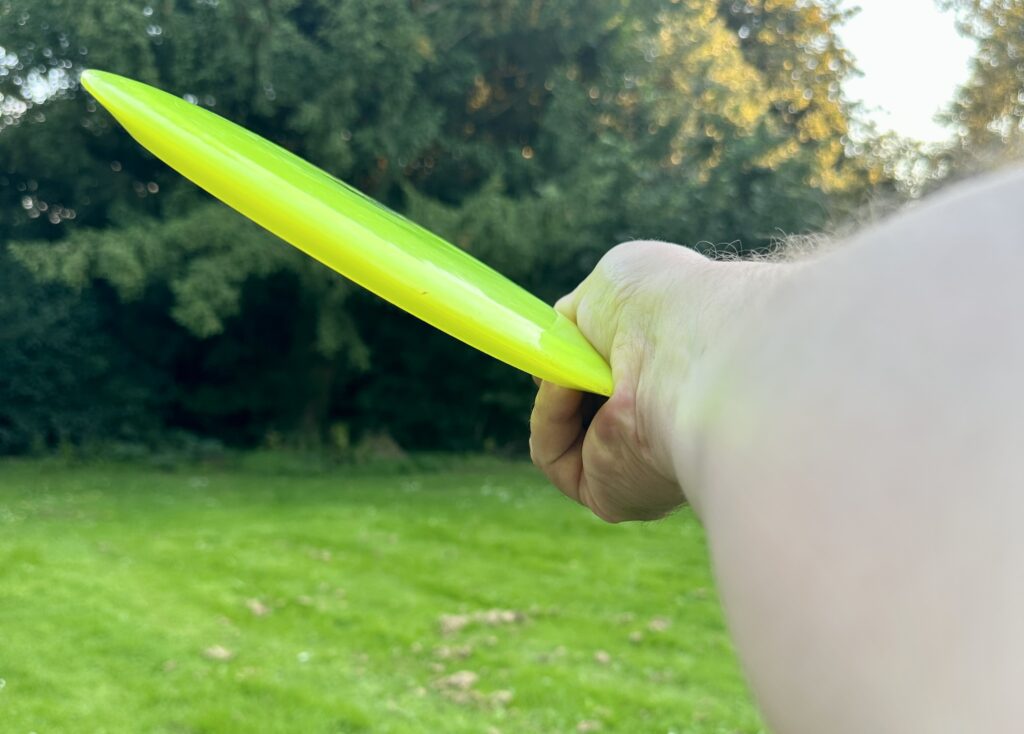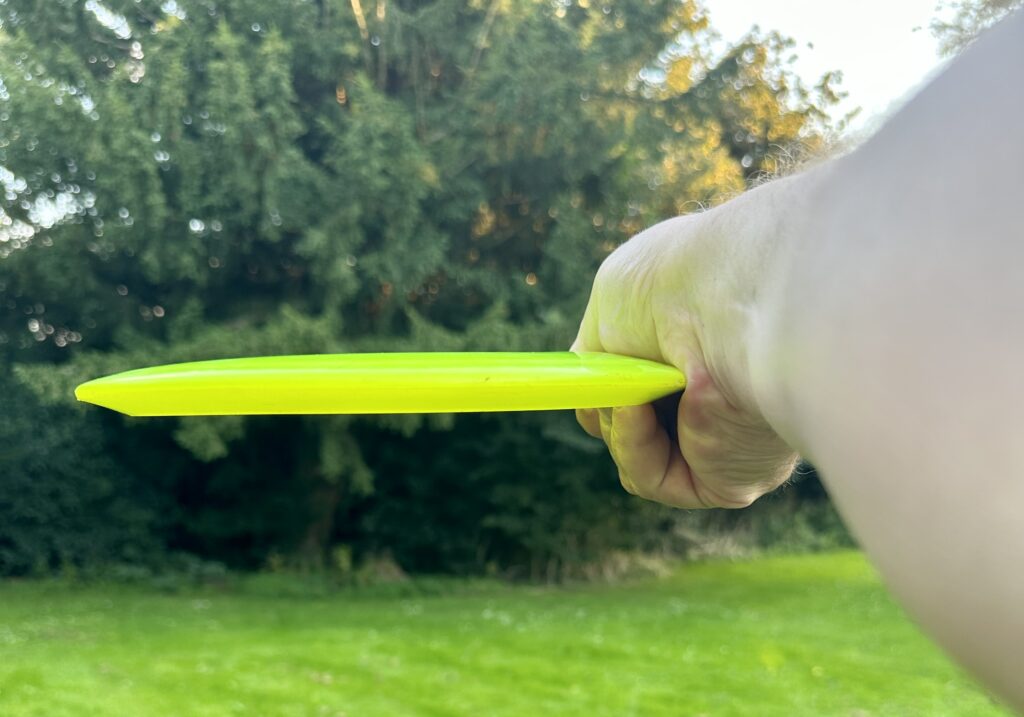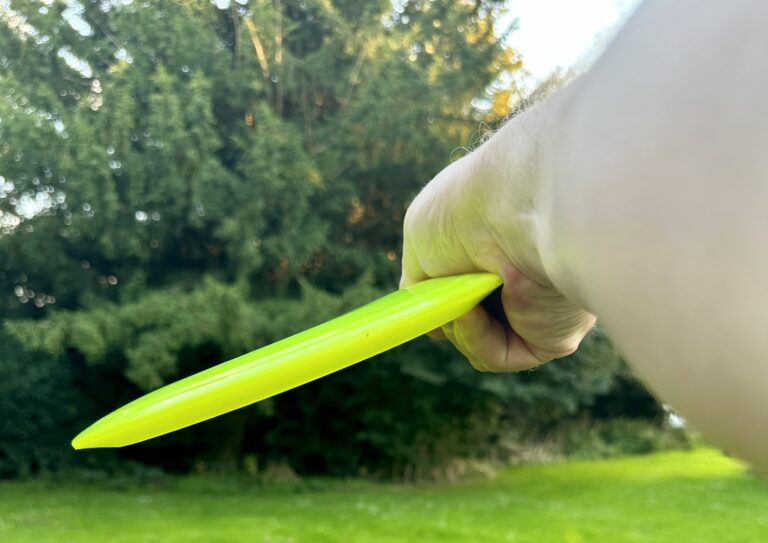If your discs keep doing the opposite of what you pictured, you are not alone. The fix is simpler than it feels. Nail your angles and the game starts listening. This guide focuses on disc golf hyzer and anhyzer throws, plus flat releases and the hyzer flip, so you can shape shots on purpose rather than by accident.
We will keep it practical. Clear cues, smart disc choices, and repeatable form. Expect quick wins on distance control, shot shaping, and fairway strategy without changing your throwing form every week.
Disc Golf Hyzer And Anhyzer Throws

A hyzer throw is all about the disc release angle. For a right-handed backhand, tilt the outside edge down on release and you get a reliable leftward curve. Use an overstable disc for a stronger finish, or an understable disc for a gentler move. The same angle with forehand or left-handed throws flips the direction, so always match your angle of release to the intended flight path.
Key notes that save strokes
- Small changes in disc release angle create big changes downrange.
- Understable disc plus hyzer angle can produce a mid-flight flip to flat.
- Overstable disc plus hyzer angle gives a dependable leftward curve.
- Commit to the line. Half angles produce wobbles and misses.
Types Of Hyzer Shots Hyzer Flip Spike Hyzer And Hyzer Bomb
- Hyzer flip shot release an understable disc on hyzer, let it flip flat in the middle, ride straight, then finish gently.
- Spike hyzer send it high with steep hyzer so it drops almost vertical. Great for tight greens and obstacle navigation.
- Hyzer bomb similar height and angle, more carry for maximum distance and a heavy finish.
Disc Choice For Hyzer Flip
Pick an understable disc that flips with your power. If it turns too hard, club up in stability. If it never flips, drop stability or add speed. For stock hyzer shots, an overstable disc gives a safer finish. For anhyzer work, a neutral to understable mould holds the rightward curve without bailing out early.
Anhyzer Technique And Force Flex

An anhyzer throw tilts the outside edge up at release. For a right-handed backhand, that creates a rightward curve. Think of it as the mirror of hyzer. With a stable or understable disc, the disc holds the rightward curve for shot shaping round corners. With an overstable disc and plenty of speed, you can throw a force flex shot that turns right then fights back late.
Quick cues that work
- Set your shoulders to the intended curve before the pull.
- Keep nose angle neutral to avoid early stall.
- For how to anhyzer throw consistently, start with a neutral mid, feel it pan, then add power.
Flat Throw Disc Golf Basics

Flat releases are the control shots that hold lines. Level wrist, level shoulders, level plant. A clean flat throw reduces variables, which is perfect for tight fairways and accuracy tips that stick. Use straighter discs to keep the flight path honest.
Hyzer Vs Anhyzer Vs Flat Differences
- Hyzer leftward curve for right-handed backhand. Great for reliable finishes and fairway strategy.
- Anhyzer rightward curve for right-handed backhand. Ideal for shaping long turning lines.
- Flat neutral start that follows the disc’s stability. Best for straight shots and small shape tweaks.
Technique And Execution For Consistent Angles
Set your body to the line, not the basket. Aim with your hips and plant foot, then match wrist angle to the shot. For how to hyzer throw, feel the outside edge down at release and keep the follow-through on the same plane. For anhyzer, keep the outside edge up and resist the urge to pull it back to flat mid-swing.
- Grip firm, wrist loose enough to snap cleanly.
- Keep nose angle flat to avoid unwanted stall.
- Throwing form improves when you slow the run-up and speed the hit.
- Use field work to learn distance control at three powers.
Advanced Hyzer Flip Technique
A good hyzer flip is timing. Release on hyzer, trust the understable disc to a mid-flight flip, then let it glide. Pair this with fairway strategy like aiming slightly inside your intended line so the flip and gentle fade land pin high. For extra carry, keep the height modest to avoid early stall. When it clicks, you get straight distance without forcing speed.
Frequently Asked Questions On Hyzer Anhyzer And Hyzer Flip
A hyzer sets the outside edge down on release. For right-handed backhand, it finishes left. Use stable to overstable discs for a stronger finish.
An anhyzer sets the outside edge up on release. For right-handed backhand, it pans right. Neutral or understable discs hold the turn longer.
Flat means level wrist and shoulders at release. It minimises curve and follows disc stability. Great for straight fairways.
Throw an understable disc on slight hyzer. It flips flat mid-flight and glides. Adjust stability and power to control turn.
Use it when you need a steep, fast drop. It clears tall obstacles and sticks near the landing zone.
It is an overstable disc on anhyzer with power. The disc turns then fights back late. Useful for long S-shaped lines.
Understable fairways and mids are best. Pick one that flips flat at your power. Seasoned plastics often flip earlier.
Yes, when paired with clean form. Anhyzers can carry long turns, and hyzer flips add glide without extra effort.
Get angles right, and the course feels easier. Use the right disc for the job, commit to the line, and you will see tighter landings, better obstacle navigation, and calmer scoring.






